
Introduction to Dynamic Pricing in E-commerce
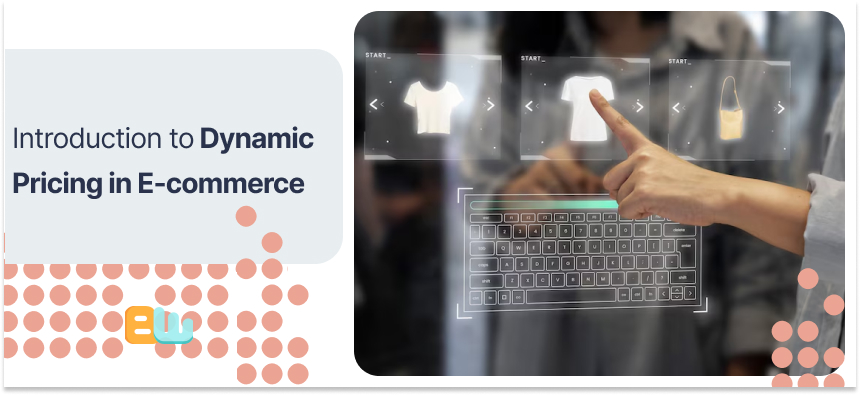
Have you ever noticed how Amazon prices might change several times in a single day? Or how the price of your airline ticket unexpectedly increases one hour later? That is the operation of dynamic pricing.
Online retailers now approach their business strategies differently thanks to dynamic pricing. Prices now change in real-time depending on a number of circumstances, as opposed to static price tags that stay the same for weeks or months. This innovative strategy enables companies to rapidly meet consumer expectations while optimizing revenue.
How Dynamic Pricing Has Revolutionized Online Retail
Remember the days when pricing was simply cost-plus-markup? These simple calculations have been replaced by complex algorithms that take into account hundreds of factors at once.
Dynamic pricing offers retailers a level of flexibility that was never possible before. To increase demand for a product that isn’t selling well, its price can be automatically lowered. On the other hand, in order to boost profit margins, prices for things that are selling out of virtual shelves may be raised.
For instance, electronics merchants that used dynamic pricing during the 2018 holiday season experienced a 25% increase in profit margins over those that used static pricing methods. It was about figuring out the best price point at every time, not just about charging more.
Key Benefits of Implementing Dynamic Pricing Strategies
The advantages of dynamic pricing extend beyond simple profit maximization. Here’s what makes it so powerful:
First, it enables businesses to respond to market changes instantly. When a competitor drops their price, your system can adjust accordingly—without waiting for a pricing analyst to notice.
Second, it optimizes inventory management. Products approaching their expiration date or going out of season can be automatically discounted, reducing waste and storage costs.
Third, it captures consumer surplus more effectively. When demand peaks, prices can rise to match what consumers are willing to pay at that moment.
The Evolution of Pricing Models in Digital Marketplaces
It took time to get from fixed rates to the complex dynamic pricing of today.
At first, internet merchants only imitated physical pricing tactics. When auction websites like eBay introduced the idea of prices based on real-time demand, it was the first significant change.
After that, travel agencies invented algorithm-based pricing, which took into account variables like departure time, available seats, and past booking trends.
The third generation of this evolution is represented by dynamic pricing as it exists now. To find the best pricing at any given time, modern systems use machine learning, competitor tracking, user behavior research, and even weather forecasts.
Understanding the Technology Behind Dynamic Pricing Algorithms
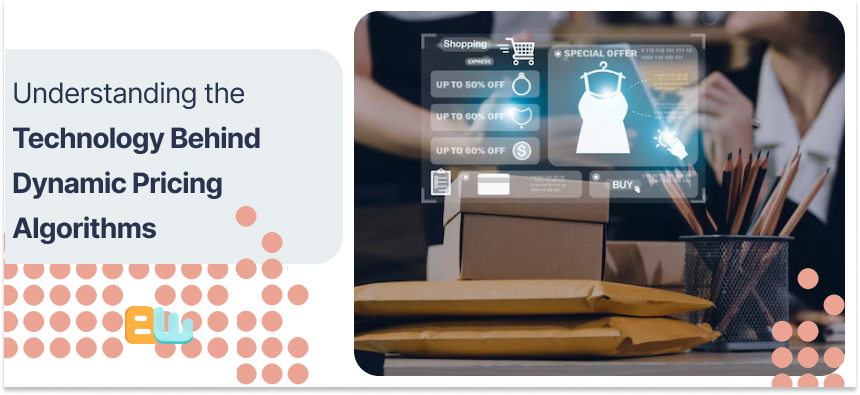
Machine Learning’s Role in Modern Pricing Systems
At the heart of effective dynamic pricing lies machine learning—the technology that enables systems to improve continuously without explicit programming.
Modern pricing algorithms use neural networks to process vast amounts of historical transaction data. These networks identify patterns that human analysts might miss, revealing precisely how demand responds to price changes under various conditions.
What makes machine learning particularly powerful is its ability to detect non-linear relationships. It might discover that a $5 price reduction increases sales volume by 10% on weekdays but 25% on weekends—insights that drive more strategic pricing decisions.
Real-time Data Analysis for Competitive Price Adjustments
The most advanced dynamic pricing systems, frequently examine hundreds of thousands of products many times a day to keep an eye on competitors’ rates.
Retailers are able to maintain optimal price positioning because of this real-time competitive intelligence. Your system can automatically change your price to keep the desired relative position, which could be matching, staying slightly above, or even going below, if your primary competitor decreases the price of a popular item by 15%.
For instance, during moments of high demand, Amazon changes the prices of up to 50 million items per day. Their reputation for competitive pricing is rising by this ongoing modification, which also helps them maximize earnings when possible.
How Predictive Analytics Forecasts Optimal Price Points
By anticipating future circumstances and setting prices appropriately, predictive analytics can elevate dynamic pricing beyond basic reaction.
In order to anticipate shifts in demand before they happen, these systems examine past sales data in addition to outside variables like approaching holidays, weather predictions, and mood on social media.
For instance, as the summer season is coming to an end, a merchant may automatically increase the price of discounted swimwear or snow shovels 24 hours prior to a forecasted snowstorm.
5 Types of Dynamic Pricing Algorithms Worth Knowing
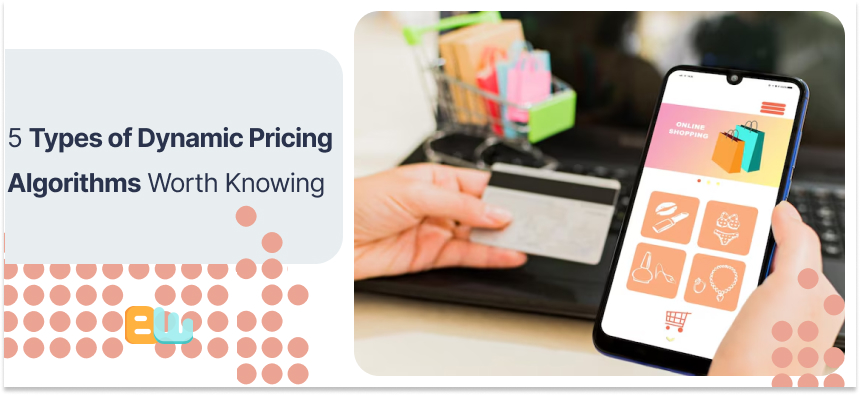
Time-Based Pricing: Capitalizing on Temporal Demand Patterns
Time-based pricing adjusts prices according to when customers are most likely to buy. It recognizes that demand fluctuates predictably throughout the day, week, or season.
Ride-sharing services exemplify this approach perfectly. During rush hour or after major events, prices automatically increase to balance supply and demand. This “surge pricing” can multiply standard rates by 2-3x during peak periods.
E-commerce retailers implement similar strategies. Many online stores slightly raise prices on evenings and weekends when shopping volume naturally increases. Conversely, they might offer better deals during traditionally slower periods to stimulate sales.
Competitor-Based Algorithms: Staying Ahead in the Market
Competitor-based pricing focuses on maintaining your desired position relative to other market players. These algorithms keep an eye on the prices of your rivals and modify yours appropriately.
An online electronics company, for instance, might set up their system to consistently price televisions 2% less than their main rival while keeping laptops at a 5% premium because of better service offers.
This strategy needs advanced competition monitoring systems that keep tabs on shipping charges, warranties, bundle offers, and promotions in addition to basic rates.
Demand-Based Models: Adjusting Prices During Peak Times
Demand-based pricing focuses on consumer behavior rather than competitor activity. These algorithms track real-time demand signals and adjust prices to maximize revenue.
When a product page suddenly receives 300% more views than normal, the system might incrementally raise the price to test how elastic demand truly is. Conversely, if cart abandonment rates spike after a price increase, the algorithm might automatically roll back to find the optimal balance.
Hotel booking sites like Expedia and Booking.com exemplify this approach. As room availability decreases for specific dates, prices automatically increase. The last few rooms might be priced significantly higher than the first ones sold.
Customer Segmentation Pricing: Personalizing for Different Buyers
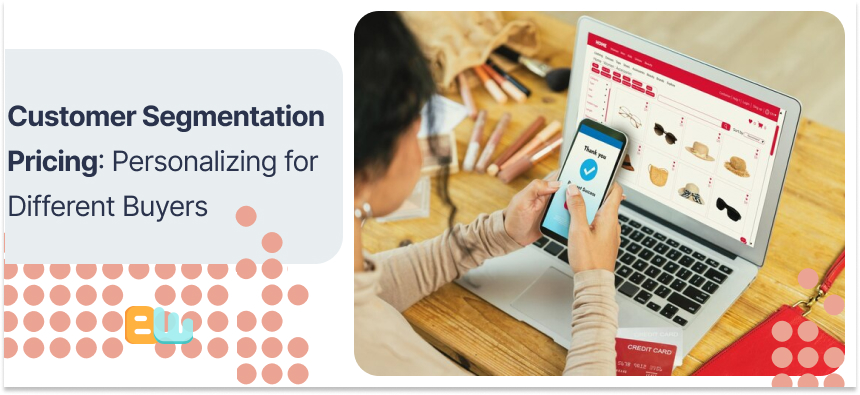
Different customers have diferent price sensitivity and willingness to pay, which is acknowledged by customer segmentation pricing.
To find the best prices for various market sectors, these algorithms examine consumer characteristics such as past purchases, browsing patterns, location, and device model. A mobile user may receive different offers than a desktop user, or a new visitor may see a different price than a regular customer.
For instance, a family planning a trip months in advance has shown greater price sensitivity than a business traveler reserving last-minute airfare. Airlines’ dynamic pricing reflects this difference.
Inventory-Based Systems: Balancing Supply with Demand
Inventory-based pricing automatically adjusts prices based on stock levels and turnover rates. These algorithms help businesses optimize their inventory management while maximizing revenue.
When inventory levels are high, prices decrease to accelerate sales. When stock is limited, prices increase to both maximize profit on remaining units and slow the rate of sales until replenishment.
Fashion retailers implement this approach effectively during seasonal transitions. As summer inventory needs clearing for fall arrivals, dynamic discounting progressively lowers prices based on remaining quantities and time until the next season.
The most advanced inventory-based systems integrate with supply chain management, considering not just current stock but also incoming shipments, manufacturing lead times, and storage costs when determining optimal price points.
How Major Retailers Implement Dynamic Pricing Successfully
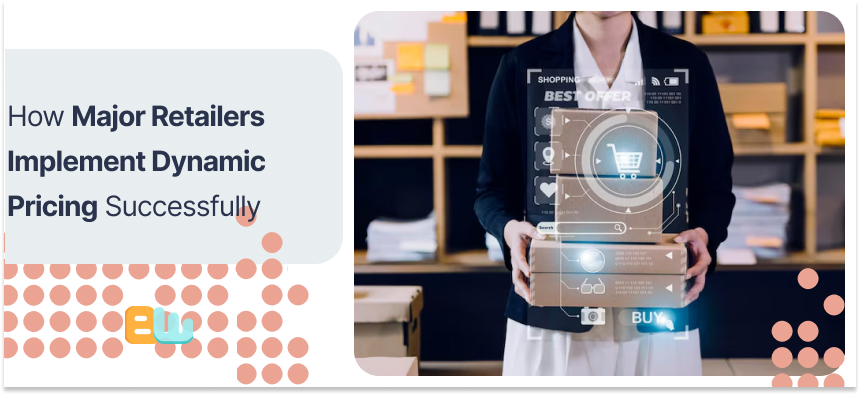
Amazon’s Price Optimization Strategy Explained
Amazon stands as the undisputed champion of dynamic pricing in e-commerce. Their approach combines nearly all the algorithm types mentioned above into a comprehensive pricing ecosystem.
At the core of Amazon’s strategy is their massive data advantage. With billions of transactions and more than 300 million active customers, they have developed pricing models that predict consumer behavior with significant accuracy.
According to reports, Amazon’s algorithms change prices by more than 2.5 million times every day, possibly changing prices for each product more than once. Their system particularly focuses on the most viewed and purchased items—the “key value items” that shape consumer price perception.
It’s interesting to note that Amazon doesn’t always look for the best deal. They retain higher margins on less competitive or price-sensitive products while keeping bestsellers competitively priced to support their value.
Airline Industry: Pioneers of Advanced Dynamic Pricing
Airlines pioneered sophisticated dynamic pricing decades before e-commerce existed. Today’s airline pricing systems represent some of the most complex algorithms in commercial use.
Modern airline pricing divides each flight into multiple “fare buckets” with different prices and conditions. Based on the rate of bookings, seasonal trends, and competing activity, the algorithm continuously changes the number of seats assigned to each bucket.
For instance, the algorithm reserves seats for late-booking (often higher-paying) clients if a Tuesday morning flight to Chicago normally sells 70% of seats in the final week before to departure. If bookings pace ahead of projections, additional seats shift to higher fare buckets.
Airlines also practice extreme time-based pricing. Three days prior to a Monday morning departure, a business traveler reserving the same seat three days in advance may pay three to four times as much as a leisure traveler booking the same seat three months earlier.
How Hotels and Accommodation Sites Maximize Revenue
Dynamic pricing has been successfully adopted by the hospitality sector, especially through direct booking platforms and online travel agents.
The day of the week, seasonality, local events, duration of stay, type of accommodation, and competitive rates are some of the characteristics that are usually taken into account by hotel pricing algorithms. Several times a day, these systems modify rates in response to shifting market conditions and booking volume.
Marriott International, for instance, optimizes prices throughout their portfolio by implementing “Smart Rates” that use machine learning. To find the best price for each home, their technology examines more than 3,000 data points.
By evaluating host behavior, guest reviews, and search positioning into their dynamic pricing recommendations, booking services like as Airbnb go one step further. Their “Smart Pricing” tool helps hosts increase occupancy and income by automatically adjusting nightly rates based on demand patterns.
The Impact of Dynamic Pricing on Consumer Behavior

Do Shoppers Benefit from Algorithmic Price Changes?
Customers face both benefits and drawbacks from dynamic pricing. On the plus side, strategic shoppers may find greater bargains as a result.
Discounts are frequently offered to those who shop at off-peak hours. Rates are much lower for those who are willing to reserve rooms or flights during shoulder seasons or off-peak periods. Price-conscious consumers can monitor Amazon price history and schedule their purchases appropriately by using tools such as camelcamelcamel.com.
Customers who don’t understand why prices change, however, may become irritated by dynamic pricing. According to a 2019 survey, 53% of buyers expressed dissatisfaction after learning they had to pay more for the same products as others.
How Price Transparency Affects Customer Trust Online
Transparency is becoming more and more crucial for preserving trust as customers get more conscious of changing pricing.
According to research, when companies clearly explain the elements affecting price adjustments, 76% of customers are more willing to accept dynamic pricing. When airlines show that “only 2 seats remain at this price,” customers understand why prices might increase for later bookings.
On the other hand, price changes that are concealed or not explained undermine trust. Customers feel manipulated rather than participating in fair commerce when they find out they’re paying more than others without knowing why.
These days, some companies voluntarily reveal their dynamic pricing strategies. While some e-commerce sites use “limited quantity pricing” or “seasonal pricing” to justify fluctuations.
Ways Consumers Can Navigate Fluctuating Prices Effectively
Savvy consumers are developing strategies to work with—rather than against—dynamic pricing systems.
Price tracking tools have become increasingly popular. Extensions like Honey automatically find and apply coupon codes while tracking price histories. Specialized services like Kayak’s price forecast for flights advise whether to “buy now” or “wait” based on predicted price trends.
Clearing cookies or using incognito browsing can sometimes reveal different prices, particularly on travel sites. Some consumers report success by abandoning shopping carts and waiting for targeted discount offers.
Understanding timing patterns helps consumers save significantly. Booking flights 6-8 weeks before domestic travel typically yields the best rates. Tuesday afternoons often feature lower prices on many e-commerce sites as retailers adjust after analyzing weekend sales data.
Ethical Considerations in Algorithmic Pricing Decisions
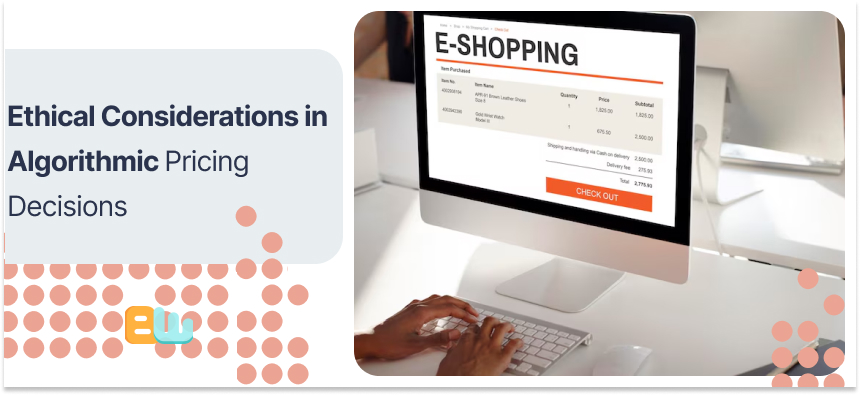
Preventing Price Discrimination in Automated Systems
The line between discrimination and personalization becomes increasingly blurred as dynamic pricing becomes more complex.
When algorithms determine prices based on protected characteristics such as age, gender, or race, it leads to problematic price discrimination. Proxy variables in data can produce similar results even when these characteristics aren’t stated directly; for instance, zip codes can occasionally have a substantial correlation with wealth and race.
To face discrimination, companies must use algorithmic auditing processes. These assessments investigate if certain demographic groups are affected by pricing decisions, even when the algorithm doesn’t take those factors into account.
Balancing Profit Maximization with Customer Fairness
Finding the sweet spot between profit optimization and perceived fairness represents perhaps the greatest challenge in dynamic pricing implementation.
Consumer psychological research shows that perceived fairness depends largely on established norms and expectations. Customers readily accept variable pricing in industries with longstanding dynamic models (airlines, hotels) but may view the same practices as unfair in traditionally fixed-price categories.
Some businesses address this by implementing bounds on how much prices can fluctuate. Setting maximum percentage changes prevents shocking price movements that trigger negative customer reactions.
Others focus on value-added differentiators alongside dynamic pricing. When customers receive additional benefits (faster shipping, extended warranties, enhanced service) with higher-priced offerings, the price differences feel more justified.
Legal Framework Governing Dynamic Pricing Practices
With more complex processes, the regulatory factors around dynamic pricing keeps changing.
Pricing discrimination based on protected characteristics is illegal in the US under civil rights laws. Additionally, the FTC enforces regulations against misleading pricing practices, with a special emphasis on false reference prices, which display exaggerated “original” costs to give the impression that reductions are huge.
Stricter rules are considered by the European Union. Businesses are required under the Unfair Commercial Practices Directive to reveal factors that have a substantial impact on price when those factors are different from what a reasonable consumer would expect.
Certain jurisdictions have laws that are specialized to a given industry. For instance, France limits dynamic pricing on some book categories to safeguard cultural assets, while California forbids surge pricing during proclaimed emergencies.
Implementing Dynamic Pricing for Your Online Business
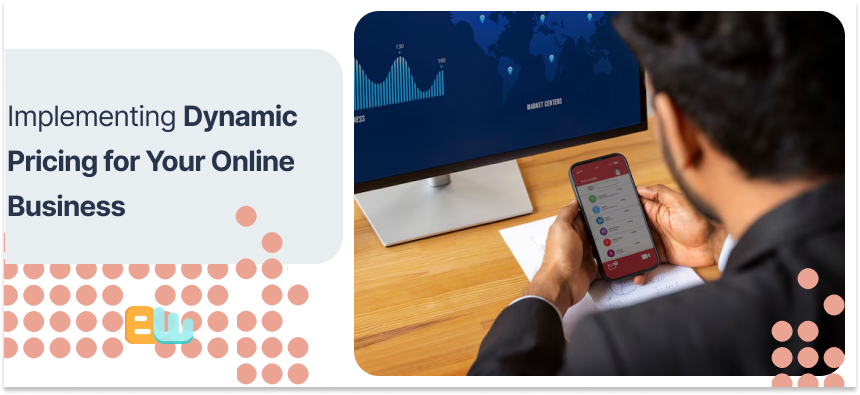
Essential Tools for Small to Medium E-commerce Sites
With the correct resources, smaller companies may successfully use dynamic pricing; it’s not just for the big retail businesses.
Apps like Prisync and Competitoor give Shopify store owners the ability to analyze prices competitively and make adjustments automatically. These work directly with your store to monitor your rivals and modify your prices according to preset guidelines.
Without requiring a great deal of technical expertise, WooCommerce users can apply time-based discounts, quantity-based pricing, and client segment pricing by using plugins such as Dynamic Pricing & Discounts or ELEX Dynamic Pricing.
For mid-sized retailers, cloud-based solutions such as Pricefx and Wiser provide more advanced choices. These SaaS platforms offer somewhat easy-to-implement AI-powered price optimization, demand forecasting, and competitor monitoring.
7 Steps to Develop Your First Dynamic Pricing Strategy
1. Analyze your current pricing performance
Start by understanding your existing price elasticity—how sales volume changes with price adjustments. Identify your highest-margin products and categories where dynamic pricing might deliver the greatest impact.
2. Define clear pricing objectives
Decide whether you’re optimizing for revenue, profit, market share, or inventory turnover. Different goals require different algorithmic approaches.
3. Gather competitive intelligence
Identify key competitors whose prices influence your customers’ purchasing decisions. Determine how frequently they change prices and in what patterns.
4. Segment your product catalog
Not all items should use the same dynamic pricing approach. Categorize products by competition level, price sensitivity, and strategic importance.
5. Start with rule-based automation
Begin with simple if-then rules: “If Competitor A drops their price below our cost + 15%, match their price down to cost + 10%.” These rules are easier to implement and understand before moving to complex machine learning.
6. Implement gradual testing
Apply your dynamic pricing to a small product segment first. Measure results carefully before expanding to your entire catalog.
7. Refine based on customer feedback
Monitor customer reactions closely. If you receive negative feedback about price fluctuations, adjust your strategy to create more predictable pricing experiences.
Measuring Success: KPIs for Price Optimization
Implementing dynamic pricing without proper measurement is like driving blindfolded. Here are the essential metrics to track:
Profit margin percentage provides the most direct measure of pricing effectiveness. Track how this changes after implementing dynamic pricing, both at the product and category levels.
Price elasticity measures how much sales volume changes with price adjustments. Lower elasticity (where volume changes little despite price increases) indicates opportunities for higher pricing.
Conversion rate by price point reveals exactly how different prices affect purchase decisions. Look for pricing thresholds where conversion suddenly drops or increases.
Market share helps determine whether your pricing remains competitive. If your dynamic pricing increases margins but reduces overall market share, you may need to recalibrate.
Repurchase rate indicates whether your pricing affects customer loyalty. If customers buy once but don’t return, your dynamic pricing might be optimized for short-term gains at the expense of lifetime value.
Price perception index measures how customers view your prices relative to competitors. Surveys can help track whether dynamic pricing is positioning you as a value leader or premium option.
Future Trends in Dynamic Pricing Technology
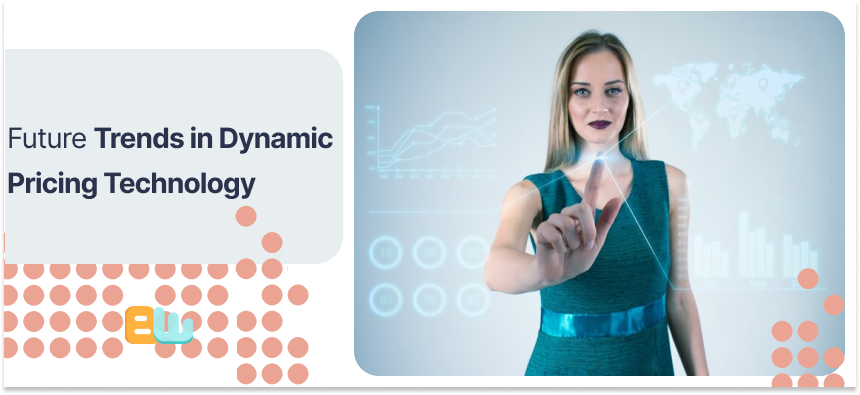
AI-Powered Hyper-Personalization of Product Prices
The future of dynamic pricing lies in extreme personalization—offering different optimal prices to individual customers rather than broad segments.
Next-generation systems will consider hundreds of customer-specific variables: past purchase behavior, browsing patterns, lifetime value potential, price sensitivity, brand loyalty, and even current weather at their location.
For example, a customer who regularly purchases premium products might see slightly higher base prices but more aggressive bundle discounts that encourage larger cart sizes.
This hyper-personalization extends beyond simple price adjustments to completely customized offers. A system might automatically create personalized bundles with individualized pricing based on specific customer preferences and purchase history.
Blockchain’s Potential Impact on Pricing Transparency
Blockchain technology has the potential to completely change dynamic pricing by fostering trsansparency and trust.
Blockchain-based “fair pricing” systems, in which price changes are permanently recorded and available to all participants, are already being used by a few firms. This transparency could help address consumer concerns about hidden price manipulation.
Blockchain could also enable new collaborative pricing models. For instance, group purchases in which costs automatically drop as more purchasers sign up, all handled by smart contracts that don’t need trust between participants.
Cross-Channel Pricing Coordination in Omnichannel Retail
Dynamic pricing is changing to resonate with all customer touchpoints as retail keeps mixing online and offline experiences.
Future systems will maintain pricing consistency (or strategic differences) across mobile apps, websites, in-store digital displays, and even voice shopping platforms. Prices will adjust harmoniously across these channels based on inventory levels at specific store locations, online fulfillment capacity, and local demand patterns.
Geofencing technology will enable location-specific dynamic pricing. When a consumer is near a physical store and receives a notification with a special offer, they may see the same offer applied instantly when they visit the website later.
The most advanced retailers will use “real-time trade promotion optimization,” in which pricing algorithms increase advertising precisely where and when prices are most competitive by automatically adjusting marketing spend across channels to support pricing decisions.
Conclusion: Maximizing Value Through Strategic Pricing
Balancing Algorithm-Driven Decisions with Human Oversight
In many online retail sectors, dynamic pricing has evolved from a competitive advantage to a competitive necessity. Rapid technological changes continue to provide advanced pricing optimization methods for both customer happiness and business goals.
The best implementations should create a balance between human judgment and artificial intelligence. Even while computers are excellent at analyzing large datasets and spotting trends at the moment, human oversight is still crucial for ethical issues, customer relationship management, and brand positioning.
When creating your dynamic pricing strategy, keep in mind that charging what the market will tolerate at any given time isn’t the end goal. Instead, it’s about establishing pricing that fairly represents the value you offer and creating long term connection with the client.
Dynamic pricing will work best for companies that use it to provide real value, sometimes by offering cheaper prices when demand is low and other times by offering premium pricing that ensures availability during peak times, but always with fairness and transparency as guiding principles.
Dynamic pricing is a technology that, when used carefully, may benefit both organizations and customers by using strong algorithms with strategic planning and clear communication.
